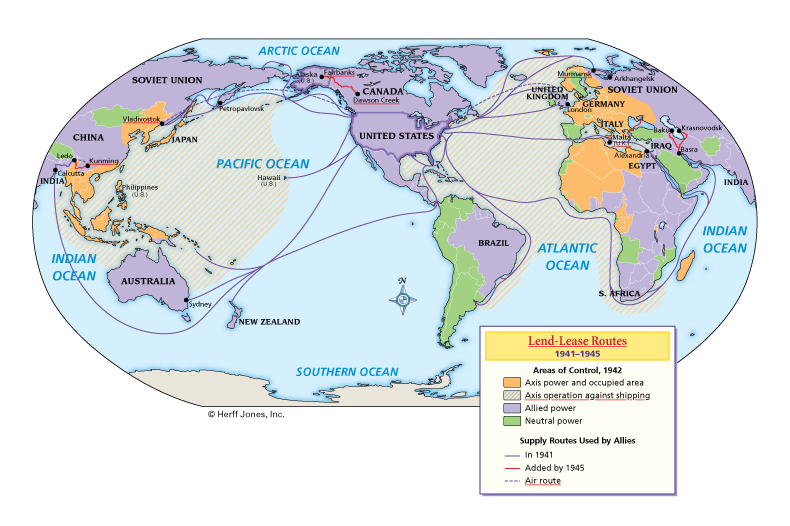
The Lend-Lease program was passed by the U.S. Congress in March 1941. It allowed the then-neutral United States to supply the Allies. Legally, the U.S. "lent" or "rented" to countries declared vital to national security. By 1945 more than 49 billion dollars worth of aid had been given, mainly to the British Commonwealth (including Australia and India) and the Soviet Union.
Japan and Germany used submarines and planes to destroy Allied shipping. These attacks were especially strong near Axis-controlled land and along the U.S. coast in early 1942, when U.S. coastal cities were still lit at night.
Planes could carry far fewer supplies than ships, trains, and trucks. Except in China, air routes were used to carry only people and the planes themselves.
In 1941 the Allies supplied China through British Burma. When the Japanese conquered Burma in May 1942, the Allies shipped supplies by air over the Himalayas (called The Hump) and by building a new road from India (called the Ledo or Stillwell Road). The road was completed in 1945.
Because the Soviet Union wasn't at war with Japan until August 1945, the Japanese did not try to stop shipments to the Soviet Union. Almost half of all aid to the Soviet Union came through the Soviet Far East.
The Trans-Alaska Highway was built to provide supplies to Alaska, threatened by Japan.
The Trans-Alaska Highway was built to provide supplies to Alaska, threatened by Japan.
Allied ships tried to avoid occupied Norway as much as possible. However, polar ice in the winter forced them closer to the Norwegian coast. The Murmansk Run was one of the most dangerous shipping routes.
British-controlled Malta needed all of its supplies shipped in, including drinking water. Italian and German attacks on supply ships nearly forced its surrender in 1941.